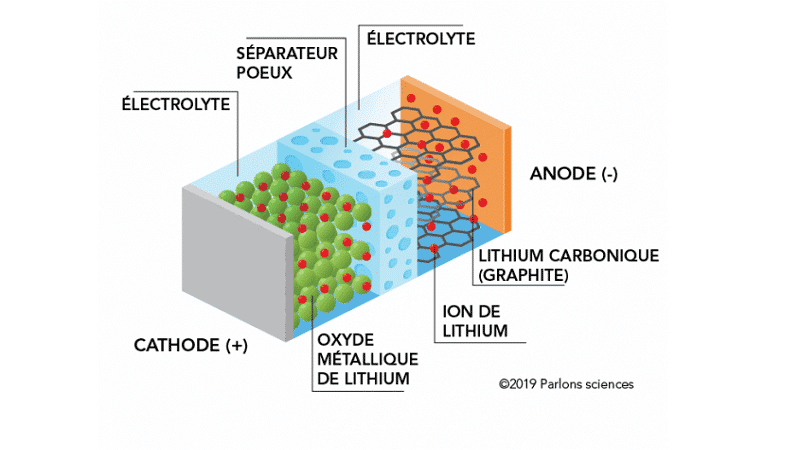
Lithium-ion batteries are accumulators that power the motors of electric vehicles.
The advantage of this battery is its high energy density and mass energy, with virtually no self-discharge. Self-discharge is the loss of energy when the vehicle is stationary. This capacity is even greater if we take into account its small size and lighter weight than batteries known to date. The principle of this battery is therefore highly effective for supplying electricity to electric vehicles.
The Lithium-ion battery operates on the principle of reversible exchange between two electrodes: a graphite anode (negative electrode) and a graphite cathode (positive electrode). This process takes place in a liquid called the electrolyte .
As long as the ions juggle between the two electrodes, the battery can supply the energy the motor needs to function properly. Lithium ion batteries are therefore rechargeable batteries.
As batteries are originally polluting, the aim is to make them last as long as possible, by recycling them. So it's important to know your battery inside out, so you can maintain it properly, optimize its use and especially its discharge!
Video - Maintaining and optimizing a lithium-ion battery
Because yes! Lithium Ion batteries are recyclable. The government requires a minimum 50% recycling rate, to minimize their impact on the environment.
Similar articles:
- Future electric cars up to 2024
- Green'Up or Wallbox: which charging solution should you choose?
- Which electric charging station do you need?
Do you have any further questions?
"All definitions